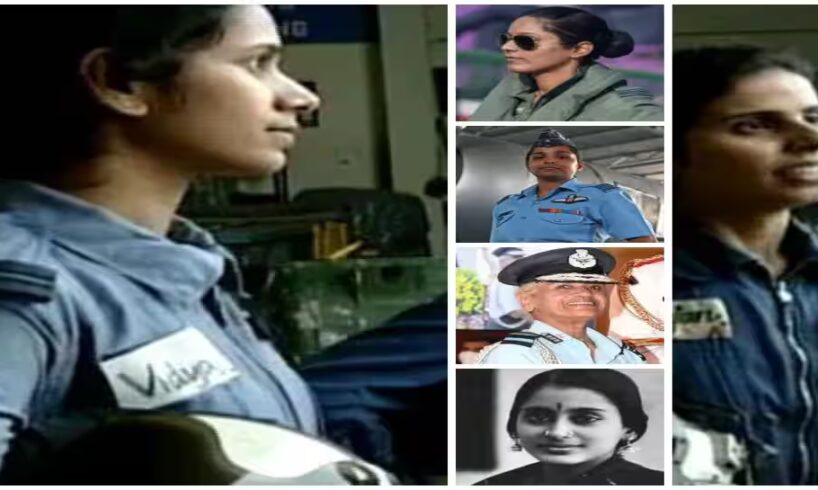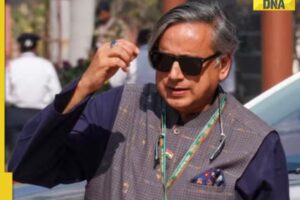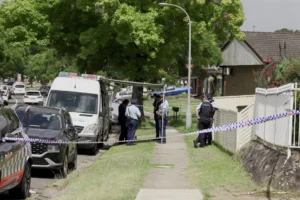
New Delhi: There was a time when the Indian Air Force (IAF) seemed like a fortress built for men. The roar of engines, the rush of sorties and the command of squadrons were stories told through a single voice – masculine and uniform. But then, one by one, came women who refused to stay grounded. They stepped into hangars, into cockpits and into the heart of combat zones and changed the course of history.
Today, the IAF stands taller because of them, women who healed soldiers in war, piloted Rafales through the skies and carried both grace and determination into the nation’s defence.
The First To Break The Sky’s Ceiling
Add Zee News as a Preferred Source
In 1955, Dr Vijaylakshmi Ramanan became the first woman officer of the IAF, long before equality became a conversation. A trained doctor, she joined the IAF Medical Corps and served through three wars of 1962, 1965 and 1971, tending to the wounded and saving countless lives.
She even designed her own saree uniform in IAF blue. “Other women officers in the Army and Navy wore pants. I wore a saree, but the sleeve was an issue. Finally, I told them I would roll up my sleeves like a man and work,” she once recalled with pride.
For years, she stood as the only woman officer in the Air Force, a solitary pioneer who paved the way for thousands. She received the Vishisht Seva Medal in 1977 and retired as a wing commander two years later.
The Trailblazer Who Reached The Top
If Ramanan opened the door, Dr Padma Bandopadhyay flew straight through it. In 2002, she became the first woman air marshal, the third-highest rank in the IAF.
Commissioned in 1968, she specialised in Aviation Medicine, authored over 25 research papers and served at the Halwara airbase during the 1971 Indo-Pak War. She was also the first woman to complete the Defence Services Staff College course and later became the Honorary Surgeon to the President of India.
In 2020, she was honoured with the Padma Shri, becoming the first woman IAF officer to receive it, an acknowledgment of a lifetime that changed the way women serve in uniform.
The Face Of The Rafale Era
When Flight Lieutenant Shivangi Singh joined the Golden Arrows Squadron in 2020, she carried with her the dreams of a new India. As the nation’s first woman Rafale pilot, she earned the nickname “Rafale Rani”.
Before flying high-end fighter jet, she had mastered the MiG-21 Bison, one of the toughest aircraft in the world. Her journey marked not only a personal triumph but a national one, the face of a generation where women pilots take on front-line roles.
The Woman Who Flew Solo Into History
In 2018, Squadron Leader Avani Chaturvedi etched her name in the record books by becoming the first Indian woman to fly a solo sortie in a MiG-21 Bison. Her flight sent a message that women in the IAF were not merely passengers of progress, they were the pilots of change.
“At any point in life, women should not feel that they are different. Focus on your best, and everything else will follow,” she once said, a philosophy that continues to inspire young cadets.
The Combat-Ready Maverick
Born in Darbhanga, Bihar, Squadron Leader Bhawana Kanth became one of India’s first three women fighter pilots. A medical electronics graduate from Bengaluru, she left her corporate job at Tata Consultancy Services to chase her childhood dream of flying.
In 2018, she became the second woman to solo a MiG-21 Bison and, in 2019, the first woman qualified for daytime combat missions. Her contribution earned her the Nari Shakti Puraskar in 2020, a fitting honour for someone who turned courage into a daily habit.
The Tejas Trailblazer
A daughter of Rajasthan and a graduate in Electronics and Communication, Squadron Leader Mohana Singh Jitarwal grew up hearing the roar of fighter jets in Air Force stations.
A member of the historic 2016 batch of India’s first three women fighter pilots, she logged over 380 flight hours before joining the No. 18 Squadron ‘Flying Bullets’.
In 2024, she became the first woman pilot to fly the indigenous HAL Tejas, a moment that reflected gender progress as well as India’s faith in its own technology and talent.
The Kargil Heroes
In the summer of 1999, as the Kargil War raged in the Himalayas, two young pilots, Flight Lieutenants Gunjan Saxena and Srividya Rajan, flew their Cheetah helicopters through enemy fire to rescue the wounded and deliver supplies.
They were among the first 25 women trainee pilots inducted in 1994, and their courage under fire redefined what women could do in uniform. Their service during Kargil remains one of the most iconic chapters in the IAF history.
The New Face Of Leadership
In 2023, Squadron Leader Manisha Padhi became India’s first woman Aide-de-Camp (ADC) to a state governor, serving under Mizoram Governor Hari Babu Kambhampati.
Commissioned in 2015, she brought to her post a blend of operational experience and leadership finesse. Her appointment signalled a revolution – women in the IAF in cockpits and also in corridors of command and ceremony.
The Sky No Longer Belongs To One Gender
From Ramanan’s saree uniform to Shivangi’s Rafale and from Gunjan’s war rescues to Padhi’s ADC role, every milestone tells the story of women who did not wait for permission to rise.
They not only joined the Air Force but also expanded its meaning. They turned a once male-dominated sky into a symbol of equality, resilience and pride.
Today, as jets thunder over airbases from Ambala to Tezpur, they carry with them the legacy of these women, each one a reminder that the IAF no longer belongs to one gender. It belongs to everyone who has the heart to fly.





